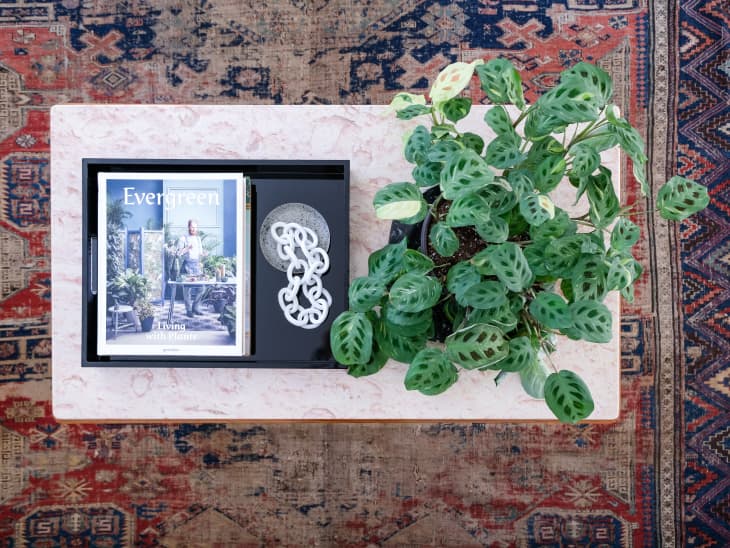
Sure, prayer plants boast beautiful, broad leaves with variegated shades of green, but here’s what’s really special about them: At dusk, the leaves fold together, as if in prayer. They open again with the morning light, sometimes with a faint rustle. Prayer plants (also called Maranta) require specific care, but when they receive it, they are happy and showy additions to your plant collection.

Prayer Plant Varieties
There are multiple varieties of prayer plants, differentiated by their leaf markings. Red prayer plants have rich red veins running through them, and are one of the most striking examples. Lemon (or lemon limes) look similar to the red, but with light green/white veins instead. The black variety has a more olive green base, with silver markings and veins, along with purple spots. Both Green and Kim prayer plants have less prominent veins and are noted for their large spots – either green (former) or deep, deep purple (the latter).

Watering
Prayer plants’ water preferences hearken back to their native conditions in Brazil, Asia, and Africa. They like to be kept evenly moist and just barely damp to the touch. Do not let soil get too dry between waterings. Prayer plants also appreciate being watered with warm water. Slow down watering a bit during dormant winter months.

Prayer plants need high humidity in order to thrive. Household humidity is likely too low for them. To give your prayer plant the microclimate it likes, group it with other plants or place it on a dish filled with pebbles and water (while making sure that the plant isn’t actually resting in the water).

Soil and Potting
Prayer plants’ fine and shallow roots are prone to root rot. Make sure that soil is well-draining and that your pot has a drainage hole. A planting mixture that includes peat moss, sand, and loam helps ensure adequate drainage.
Because of their shallow root system, it’s best to plant prayer plants in shallow pots that have good drainage holes. To prevent compact soil, repot every spring, keeping soil loose.
Light
While prayer plants can tolerate low light conditions, they do best in bright, indirect light. They don’t like direct sunlight. Light that’s too bright can bleach your prayer plant’s leaves, so if your plant’s leaves begin to appear washed out, try moving it into lower light conditions. On the other hand, without enough light, your prayer plant’s leaves won’t open all the way in the morning, so watch for this signal as well.

Fertilization
Prayer plants are acid-loving plants. Use a water-soluble fertilizer at half the recommended dose every two weeks in the spring and summer. Your prayer plant will occasionally enjoy your leftover tea as well. Don’t fertilize in the winter.
Prayer Plant Propagation
Prune your plants in order to keep their pleasant, bushy appearance. In the fall, cut back older leaves. Use sharp, clean pruning shears.
Prayer plants are also easy to propagate through division when you repot them in the spring. In addition, you can propagate prayer plants through cuttings. Gardening Know How describes the technique: “Cuttings can be placed in a mixture of moist peat and perlite and covered with plastic to retain moisture levels. You may want to poke a few air holes in the plastic to allow for adequate ventilation as well. Place the cuttings in a sunny location.”
In addition, cuttings or broken parts of the plant may be dipped in rooting powder, placed in water, and then planted once roots reach about an inch long.

Prayer plants are prone to spider mites and mealybugs. Be especially vigilant and check your plant for signs of these pests during dryer winter months. Spider mite infestations will first appear as webbing between stems and on the underside of leaves. There may also be yellow or brown spots on the leaves. The spider mites themselves look like black dots.
Mealybugs problems manifest as a white, powdery substance. Leaves may also begin to curl and the plant’s leaves may have a clear, sticky substance, which can also spread to nearby surfaces.
Wash off spider mites with a strong stream of water directed on affected areas, and take care of mealybugs with a cotton swab soaked in alcohol.
Hải Yến
Gió bạn với cây tự buổi nào ,
Gió về cây lại ngất ngư chao .
Gió đi cây sẽ im lìm đứng,
Như kẻ lỡ làng dạ khát khao .



